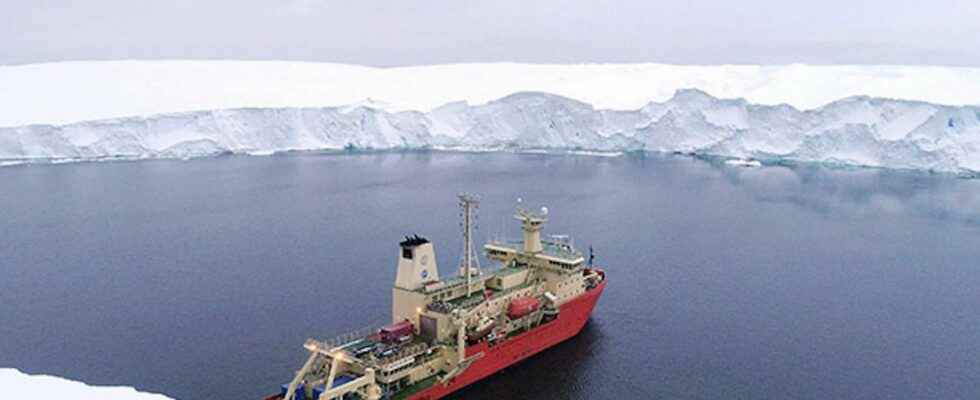The Thwaites glacier which is also called “glacier at the end of the world” is located in Antarctica. If it were to melt, it would cause a marked rise in sea levels around the world. To better understand if and when this could happen — in the context of anthropogenic global warming — researchers have looked into the history of this glacier. Their conclusions are not reassuring.
Its real name is Thwaites Glacier. In L’West Antarctica, he’s kind of like an elephant in a china shop. In a slightly less poetic way, he is nicknamed the “doomsday glacier”. Understand, the “glacier at the end of the world”. Or even the “glacier of the apocalypse”. Why ? Because it is so bulky, 120 kilometers wide and 600 kilometers long, that its melting could, on its own, lead to a rise in the global level of the oceans of between one and three meters.
This “glacier of the end of the world », you imagine — like all the other glaciers on our planet — began to melt. Under the effect of global warming anthropogenic. Satellite images show it. Thwaites Glacier is thinning and retreating. At a pace that seems unwilling to accelerate. In an attempt to understand how speed and to what extent the phenomenon will continue to occur in the years to come, a international team of researchers mapped for the very first time in high resolution the floor oceanic located just on the edge of the Thwaites Glacier.
Taking advantage of an unusual summer, a summer lacking in sea ice, the researchers notably studied the ridges left like footprints by the movements from “glacier at the end of the world”. At a depth of 700 meters, they found data that revealed that at some point in history, over the past 200 years, on a duration six months, the front of the Thwaites Glacier retreated at a rate of more than 2.1 kilometers per year. This is twice as fast as what satellites observed for the period between 2011 and 2019.
Antarctica more sensitive to global warming than researchers thought
“Our results suggest that this glacier experienced extremely rapid phases of retreat. Maybe even as recently as the mid-twentiethe century “, comments Alastair Graham, marine geophysicist at the University of South Florida (United States), in a press release. What sweeps away the idea of a “upper withdrawal speed limit”. And even suggests that the melting could be done at a speed of five to ten times that which we know today.
” The Thwaites Glacier now hangs by a thread. Going forward, once it retreats past a shallow ridge, we should expect to see significant changes there on small timescales. Maybe even year to year. »
It is the use of a robotic vehicle responsible for sensors imagery that made mapping possible. For nearly 20 hours, Ran — as the scientists affectionately call him — explored, for the first time, the front of the Thwaites Glacier. In extreme conditions. To sample the sediments of the seabed directly and date the observed ridges even more precisely, they will thus have to go back because a collapse suddenly from pack ice and the subsequent formation of thick sea ice prevented the operation.
So questions remain. But what is certain is that the ice caps Antarctica are not as slow to react to global warmingthan the specialists previously thought. “It looks like one more small blow to Thwaites Glacier could spell disaster”concludes Alastair Graham.
Interested in what you just read?
